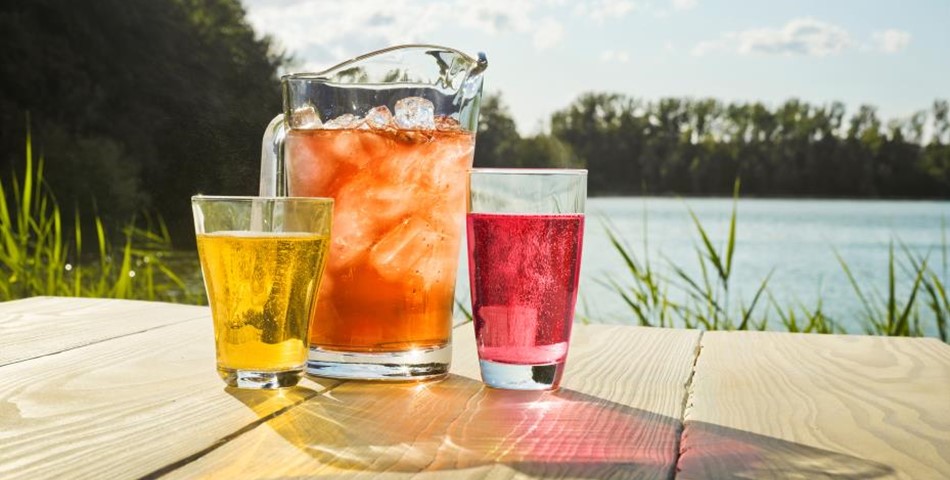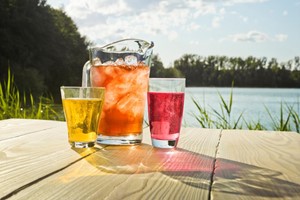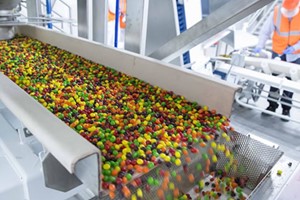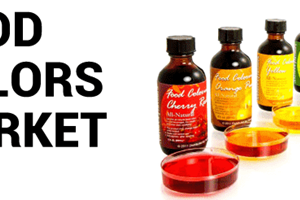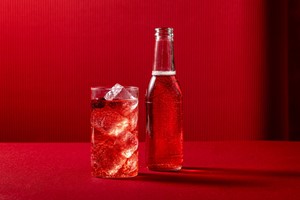Consumers increasingly seek variety in their glasses and expect more from beverages than just to satisfy their thirst. New drinking experiences and bursts of flavor are in demand that provide appealing and sophisticated alternatives to the usual sweet and fizzy lemonades.
At the same time, consumers want natural, clean label products; health consciousness and knowledge on ingredients is increasing. These developments challenge beverage manufacturers and call for innovations, but also open up new opportunities. With the right ingredients, producers can position themselves in a growing market segment.
Coloring Foods, made exclusively from fruits, vegetables and edible plants, are key to success in satisfying consumers' expectations of visual appeal and naturalness. Color is one of the most important factors in the purchase decision. In fact, 75% of the first impression of a product is determined by the color alone. The reasons for this are manifold. Firstly, color is an important, if not primary indicator for quality and freshness.
Secondly, it raises expectations regarding the taste of a product, because the brain associates specific flavors with certain colors. Red and purple hues, for example, increase perceptions of sweetness. Thirdly, the general value placed on visual experiences is growing. Consumers are searching for creative and distinctive drink creations with interesting and vibrant colors.
The focus on color has produced countless novelties in the industry that use an optimized color concept to make a beverage stand out. Recent product developments explicitly reference color in their name, create unexpected looks or mix up color and taste to stir up consumers' curiosity. This trend has been particularly notable in the sector of premium soft drinks.
More and more adults wish for drinks that match the respective social situation, serve a sophisticated taste and go beyond simple water or juice. Therefore, the market for beverages like lemonades with new flavors, near water- and tea drinks with ingredients such as vegetables or exotic fruits and smoothies with so-called superfoods has been growing fast.
Plants are also used for exciting new possibilities, for example when mixing fruit based drinks with herbs, grains or even algae. All of these premium beverage concepts are dependent on appealing colors.


Natural please
Despite the longing for variety and exciting new drinks, consumers still prefer the natural alternative. Food scandals and increasing health consciousness have led to greater skepticism about the ingredients of food and beverages. Thanks to more information, available for example on the internet, consumers have higher knowledge of ingredients and their origin, and use it to scrutinize labels and all parts of the supply chain. A study by the GNT Group, producer of the global brand in Coloring Foods EXBERRY, found that 66% worldwide check the label of food and beverages to make an informed purchase decision. The use of additives - especially with unfamiliar names - and INS numbers has become a real issue. Using colorants, preservatives or artificial flavors can deter consumers from buying a product.
Clean labels require naturalness
Although manufacturers seek to meet their customers' demand for greater naturalness and are already using alternatives to synthetic colorants, consumers seem to have a different understanding of what natural really means. Colors originating from any natural substance - including for instance insects or minerals - are accepted by only 21%. Instead, every second person expects natural colors to be made only from edible raw materials such as fruits and vegetables. These results clearly show that consumers not only evaluate artificial colors critically, but also colorants that are produced from natural raw materials by using chemical solutions. Examples are carmine (made from the cochineal insect), grape skin extract or carbon black (made from wood or peat). To determine whether a certain product meets their expectations, consumers depend on simple labels. According to GNT's survey, two in three emphasize the importance of easy to understand ingredient information for their purchase decision, pushing the clean label trend forward. Beverage manufacturers need to react. They are more and more dependent on color solutions that enable them to produce clean label products while providing a full range of shades and opportunities.
Key to success
Coloring foods are an ideal answer to these requirements. The concept behind them is fairly simple: coloring food with food. They are concentrates obtained exclusively from fruit, vegetables and edible plants, produced by only applying gentle physical methods. Raw materials are chopped, pressed, cooked and concentrated. Chemicals are searched in vain. The results are true natural solutions that can simply be labelled as "Coloring food (concentrate of grapes, elderberries)" or "concentrate (carrots, elderberries)". As such, they are perfectly fitting consumers' wishes for natural products and clean label formulations. They can instantly see and understand where the colors originate from.


Full vertical integration for excellent quality
The production process and raw materials base of colorants have also been constantly optimized and extended to provide solutions that are equal to colorants in terms of variety, stability and brilliance and shelf-life. This is guaranteed by the complete vertical integration of the supply chain. From the selection of seeds to the final concentrates, all steps are monitored closely to ensure that only the best raw materials are cultivated, that they are harvested at the ideal time of ripening, and that they are processed within hours of harvesting to prevent color deterioration. A standardized two-step production process and strategic stock philosophy secure year-round availability and best possible price stability at a consistent high quality level.
Benefitting from experts
In the last step of the process, color experts develop the right recipe for the product in question - in close cooperation with the manufacturer. Local support is available through offices and laboratories in the Middle East, Europe, Asia and America. Even though coloring foods are easy to handle, every application has specific characteristics. In order to successfully switch to the vegetable and plant concentrates, it is important to be familiar with how different ingredients in the recipe can affect their performance. These include minerals or vitamins, flavors or the mixing ratio of the individual components and the pH value, total acidity, density, water and fat content. A color's stability will also depend on the packaging, the possible effects of oxidation and, of course, on the climatic conditions in the country where the end products are being sold. Once all the requisite parameters have been checked, the right coloring food for the specific application is selected from the portfolio, or a customized solution is provided. Then, the coloring foods undergo extensive testing until the desired shade and intensity have been achieved.
Trusted experience
Thanks to the rising demand for natural foods and beverages, coloring foods are already becoming the industry standard in Europe and the US. Beyond that, market shares in the Middle East, Asia and South America are rising. Today, more than 30 billion food and beverage servings contain the concentrates each year. Since they meet consumers' demands for naturalness to the fullest extent, they ideally support in making products future-proof.




